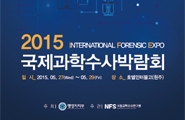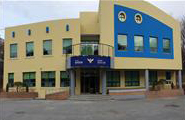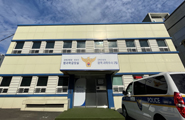NFS in photos
-
1955.3.25
Establishment of NFS
Developed the world's first auto detection system for counterfeit stamps
Developed an automatic poison detection program
Established and announced NFS 5-year mid- to long-term comprehensive development plan
Enforced the Act on the Use and Protection of DNA Identification Information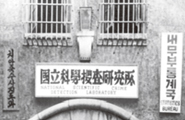
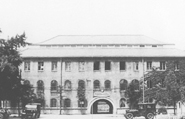
-
1958.7
Start of autopsy report form printing
In the early days of our establishment, an operating surgeon prepared a draft, and other employees wrote out a copy or typed up the autopsy report. Since 1958, letterpress printing was possible, so that the autopsy operating surgeon directly filled out the form, and assistants wrote out a copy when sending it out.

-
1961
Change of document retention level for autopsy reports
In the early days, autopsy reports were managed as grade three confidential document, but since 1961, as the document retention level has changed into just general level documents, the institute reclassified documents while notifying each front office for the reports already distributed.
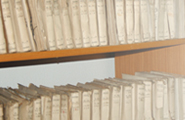 Publication of NFS guide brochure
Publication of NFS guide brochure
Published and distributed a brochure to publicize the status of NFS analysis services domestically and internationally
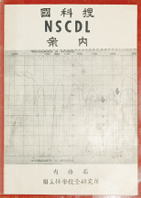
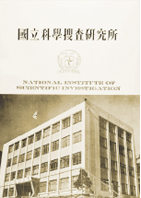
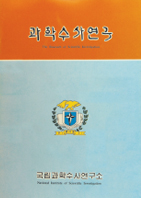
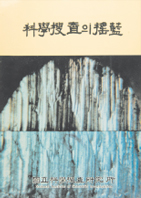 Won the Capital Building volleyball tournament
Won the Capital Building volleyball tournament

-
1962
Establishment of a motto of the institution
In order to boost morale and instill positive views among NFS employees, a motto of "Honesty, Accuracy, & Fairness” was established, and work guidelines for employees were prepared.
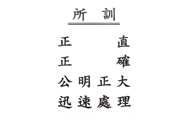
-
1963.7.31
Start of NFS annual report publication
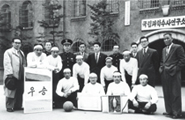
-
1963.8.25
Relocation to Cheongun-dong Office
At the time of establishment, the 2nd annex of the Capital Building was temporarily used, but it was inconvenient because the government building was small, and dead bodies had to be treated in the Capital Building. Therefore, on August 25, 1963, an independent office was prepared in Cheongun-dong, Jongno-gu, Seoul, which became the new location of the institute.
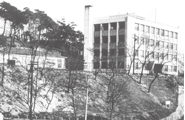
-
1965.9.8
Awarded the prime minister’s commendation for detection of methadone
Our institute succeeded in the detection of methadone using a novel test method, thin-layer chromatography (TLC), which was first applied in South Korea. On September 8, the director, Wu Sang-deok was awarded the prime minister's commendation, and the drug deputy director, Lee Chang-gi was awarded a presidential medal.
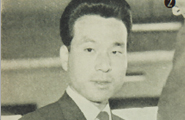
-
1970.3.25
Presidential Institution Citation at 15th Anniversary
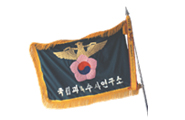
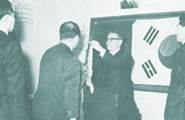
-
1971.8.21
The 1st Forensic Medicine Seminar
In 1965, a forensic medicine society was established. During the first forensic medicine seminar held at the second lecture room of Korea University College of Medicine, 108 experts from various fields and related professors attended and presented 18 academic papers on the postmortem examination methods and problems of the current medical law.
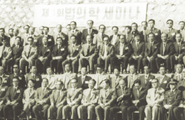
-
1977.2.20
Relocation to Uiju office
On February 20, 1977, 13 years after the relocation to the Cheongun-dong office, the institute moved to the tobacco manufacturing factory building of the old Monopoly Bureau at 209, Migeun-dong, Seodaemun-gu, Seoul.
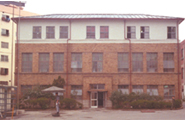
-
1979.6.1
Official notice of establishment of work division regulation
The institute’s work division regulation was abolished, and a new work division regulation was established and officially announced as sub-official order no. 1.
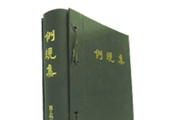
-
1986.4.1
Application of lie detector to analysis service
From April 1, a lie detective inspector was hired to conduct polygraph testing in earnest. The lie detector had attracted the attention of the public in South Korea due to a child (Lee) abduction case occurred in the jurisdiction of the Mapo Police Station in 1981.
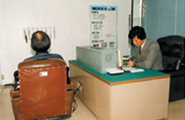
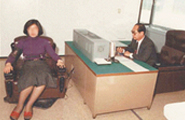
-
1981.12.30
Signed a sisterhood relationship with the Army Science and Investigation Research Institute
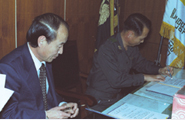
-
1980.4.7
Publication of 30 years of history of scientific Investigation
As part of the 30th anniversary project, the institute published a 30-year history of the institution in order to compile its growth and development process and use as a reference record for future development.

-
1986.9.1
Relocation to Sinwol-dong office
In 1986, the institute moved to Sinwol-dong, Yangcheon-gu, which was a secluded suburban area, and is still currently the office of the NFS. The Sinwol-dong office has been equipped with an autopsy room for smooth autopsy work of the forensic medicine department, and an animal center and a special incineration plant to prevent air pollution have been newly built.
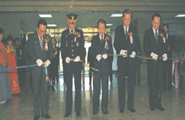
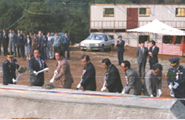
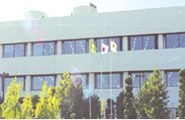
-
1986.9.1
Establishment of the “Oath of NFS Employees”
Our institute has established the "Oath of NFS employees" by collecting opinions from the Korea Institute of Mental and Cultural Studies in order to establish the career philosophy of employees and to raise the level of pride as a scientific investigation institute.
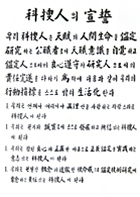
-
1987.5.23
Start of voice recognition personal identification service
In order to cope with crimes using networks in cases such as kidnapping, bomb threat, intimidation, etc. a voice research laboratory was newly established, and voice personal identification service started.
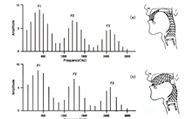
-
1991.8.1
Installation of DNA analysis lab
On August 1, 1991, our institute installed a DNA analysis laboratory and first introduced a personal identification method using the DNA analysis lab for criminal case examinations in South Korea.
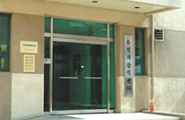
-
1991.11.1
Establishment of Traffic Engineering Division
The Traffic Engineering Division was newly established for engineering analysis of ever-increasing traffic accidents. In January 1997, a traffic engineering building was newly built.
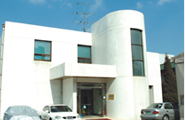
-
1993
Establishment of methamphetamine detection method in hair
In 1993, a methamphetamine detection method for hair was first established in South Korea, and it is now possible to detect the drug that has been taken from a long time in the past.
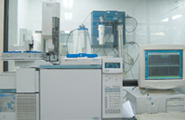
-
1993.3.16
Opening of the first local branch, southern branch
In 1993, the first local branch, the southern branch, was opened in Dongsam-dong, Yeongdo-gu, Busan, to oversee the analysis services of Busan, Ulsan, Daegu and Gyeongsang-do.

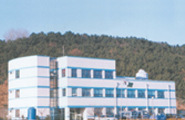
-
1995.6
Application of DNA analysis for Sampoong Department Store
On June 29, 1995, there was a major disaster that caused the Sampoong Department Store to collapse in an instant. This accident is the first case in South Korea to apply genetic (DNA) analysis for massive deaths. For the first time in Korean constitutional history, the accredited death system was applied through the accredited death committee.
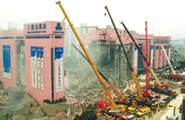
-
1996.10.17
Signed mutual cooperation agreement with KIST
Our institute and KIST have concluded a mutual cooperation agreement for the scientification of criminal investigations including collaborative research, exchange of personnel, and joint use of research facilities. Accordingly, for three years, the two organizations jointly conducted core technology development tasks for a surface analysis technique and traffic accident and substance abuse tracking for the prevention of accidents.
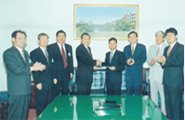
-
1997.6.27
Opening of western branch office
On June 27, 1997, a western branch office was opened in Jangseong-gun, Jeonnam due to the need to quickly respond to various violent incidents and accidents occurring in Gwangju Metropolitan City, Jeollanam-do, Jeollabuk-do, and Jeju and the need to expand the infrastructure of analysis services by region.
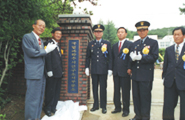
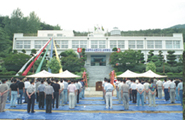
-
1997.8.6
Guam KAL crash
Korean Air (KAL) aircraft crashed on August 6, 1997 in Guam, a territory of the United States, causing huge loss of life. The DNA analysis lab of this institute and the DNA profiling lab of the US Department of Defense concluded agreements such as standardization of analysis techniques and analysis schedules on the basis of joint analysis for performing personal identification tasks.
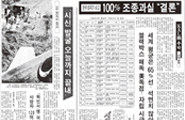
-
1998
Joint research for crime identification and prevention technology development
From 1998 to 2002, the NFS and KIST successfully conducted the crime identification and prevention technology development project in collaboration. Due to the latest analysis technique developed through this project, the NFS has become a world-class institute.
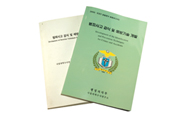
-
1998.6.9
Narcotics analysis division awarded the 8th anti-drug prize
The narcotics analysis division was awarded the 8th Anti-Drug Academic Research Prize organized by Korea Anti-Drug Action Headquarters in 1998 by receiving credit for contribution to the “realization of a bright and healthy society without drugs.”
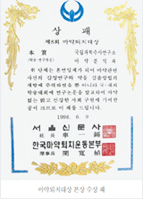
-
1998
Opening of aseptic autopsy room
Aseptic autopsy room with constant temperature, constant humidity and antibacterial system was first opened in South Korea.
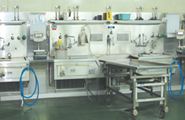
-
2000.7.1
Development of video measurement program & CCTV replay system, start of analysis service
The document imaging division introduced the 3D digitizer system to ensure accuracy and objectivity by single person judgment in 1999. In 2001, it developed a CCTV replay video system to judge crimes by rapidly and accurately reproducing the same position and angle as the image of a criminal who was photographed on a CCTV at a crime scene such as a bank, a post office or a subway, which was used for analysis.
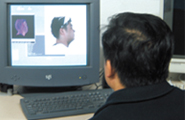
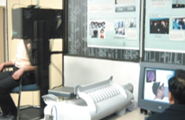
-
2000.3.24
Launching of Korean Forensic Science Society
On March 24, 2000, the Korean Forensic Science Society was established, which consists of related organizations such as academia, research institutes, and investigative agencies in related fields for the revitalization of the forensic science field.
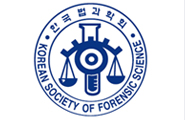
-
2000.7.1
Establishment of fire research laboratory
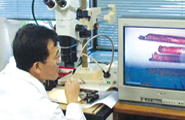
-
2000.9.5
Opening of central branch office
In order to carry out the analysis tasks for various violent accidents occurring in Daejeon and Chungcheong area, the central branch office was opened at Hwaam-dong, Yuseong-gu, Daejeon and has been contributing to the security of the Chungcheong area by actively responding to primary investigations and shortening case solving times.
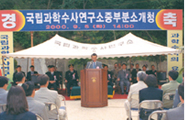
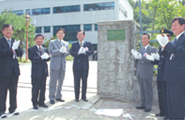
-
2000.10.25
Korea-UK forensic science technology agreement
On October 25, 2000, our institute and the British Council signed a Korea-UK forensic science technology agreement for human exchange and mutual technology information exchange in order to pursue the development of forensic science. On December 7 to 8, the 1st Korea-UK Joint Forensic Science Symposium was held.
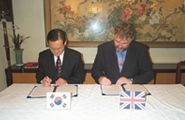
-
2000.10
NISI – TAR Development
The NISI-TAR, an accident reconstruction program, was developed as a way to increase the reliability of traffic accident interpretation and was distributed to the police and investigative agencies.
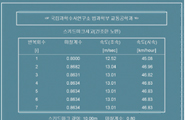
-
2001.6.20
Narcotics analysis division designated as an international drug standard laboratory by the UNDCP
On June 20, 2001, the drug analysis division was designated as an International Drug Standard Laboratory by the United Nations International Drug Control Program (UNDCP), which is an international proficiency testing authority.
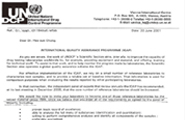
-
2001.7
Establishment of LIMS
In 2001, the institute built a laboratory information management system (LIMS) that links the main institute and branch offices to conduct quick and accurate analysis services through analysis information sharing.
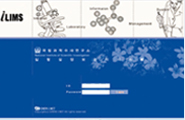
-
2002.2.5
Establishment of NFS mark regulation
Our institute has newly defined the institute mark based on Article 145 of the sub-regulation. The eagle (yellow) symbolizes the progressive and ambitious spirit of the institute. The leaf of rose of Sharon (green) symbolizes the endless development of the Republic of Korea and the institute. The book symbolizes the academic research institute. The shield (blue) symbolizes the authority of the institute. Additionally, the cross (white) symbolizes the constant effort and luminous achievements. The outstretched lines (black) mean the improvement with honest, accuracy, fairness, and rapidity. The ribbon (black letters in yellow background) symbolizes the banner and activity of the institute. The genuine knot means unity.
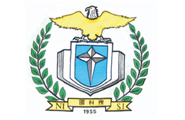
-
2002.4.15
Launch of KDMORT
On April 15, 2002, the Korea Mortuary Operational Response Team (KDMORT) was established as an unofficial agency after the Gimhae-China Civil Aircraft Crash. KDMORT specializes in identity verification including rescue, medical care, funeral and administrative procedures at the time of a major disaster.
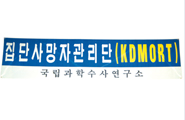
-
2003.2.18
Daegu Subway Fire
On February 18, 2003, a Daegu subway fire broke out. Our institute conducted precise inspections for the goods left at the site with regard to personal identification, and informed the Accident Response Headquarters of a total of 142 accredited deaths.
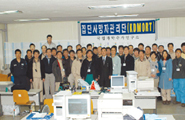
-
2003.11.5
Academic exchange agreement with Sydney University of Technology
Our institute has signed an academic exchange agreement with the Sydney University of Technology. The details of the agreement is as follows: Exchanging and visiting students for scholarship and research, mutual exchanging and visiting professors and staff for research, education and discussion, unlimited exchanging of information, exchanging books and research papers, joint research activities, and joint participation in international research projects and development process.
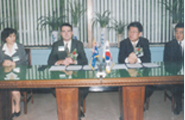

-
2004
Production of a blood sampling container set
In 2004, the institute produced and distributed a blood sampling container set for blood alcohol concentration containing antiseptic and non-alcoholic disinfectant cotton inside, thereby enhancing the convenience and reliability of blood alcohol concentration assessment.
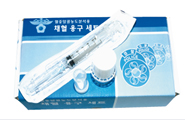
-
2004.3.23
Seoul eastern branch office
In order to rapidly handle death cases occurring in Seoul and the eastern part of the metropolitan area, a branch office for autopsies was established in Asan Medical Center in Seoul.
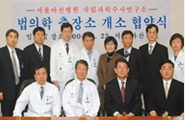
-
2004.4
Start of estimation of writing time based on writing instruments
Through four years of research, our institute has obtained the reference standards that are necessary to estimate the writing time based on writing instruments, has established an estimation technique and starting in April 2004, performs analysis on the writing time.
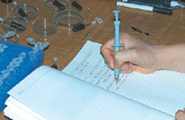
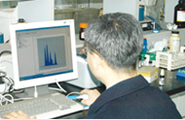
-
2004.8
Acquisition of the Certification of Internationally Accredited Testing Organization (KOLAS) in DNA & Narcotics Field
On August 7, 2004, our institute acquired the certification of internationally accredited testing organization in DNA and narcotics analysis, which was a stepping stone to become a world-class analysis agency.

-
2004.12.26
Southwest Asian tsunami disaster
On December 26, 2004, a tsunami hit the western coast of Sumatra, Indonesia, causing massive loss of lives and property damage. Our institute sent an forensic analysis team to Thailand for the identification of Korean missing persons and provided assistance for record of missing persons and unidentified missing persons.
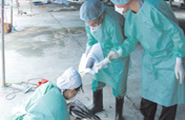
-
2005
Establishment of Eastern Branch Office
The eastern branch office was newly established in Munmak, Wonju, Gangwon-do to secure the ability to respond to violent cases in Gangwon-do, eastern and southern Gyeonggi regions and to speed up the investigation of local crimes.
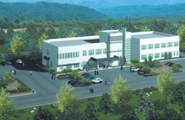
-
2005.8
Decision to hold the International Toxicology Society meeting (TLAFT)
In August 2005, the 43rd meeting of the International Toxicological Society (TLAFT) was held in Korea for the second time in Asia. As the International Toxicology Society is the most prestigious society in the world, the International Toxicology Society meeting held in Korea was an opportunity to establish and develop the international status of our institute.
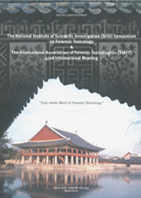
-
2005.3.25
50th Anniversary Celebration
‘On the occasion of the 50th anniversary of our founding, our institute held a commemoration event on March 25, 2005 in the conference room of the R&D center and the 63 building convention center. Under the theme of 'Growth of Korean Scientific Investigation,’ domestic and international academicians and eminent scientists were invited, and various events took place including special lectures, symposiums, scientific investigation equipment exhibition, and paper presentations.
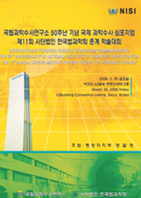
-
2006.1.1
Switching to a responsible administration agency
In consideration of the publicity and functions of the NFS, the administrative and financial autonomy has been partially guaranteed as per Presidential Decree No. 19230, and the NFS was newly designated as a responsible administration agency responsible for its operational performance.
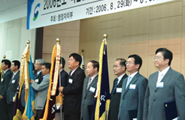
-
2019.12.23.
Establishment and operation of forensic science assessment office in Gyeonggi Nambu
To share information between the police and the NFS and build a site-focused assessment and identification system for the in-depth analysis of cases, a forensic science assessment office is installed and operated in the Gyeonggi Nambu district.
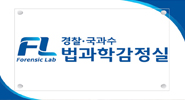
-
2019.11.15
Establishment and operation of forensic science assessment office in Jeonbuk
The NFS and the National Police Agency have established a forensic science assessment office in the Jeonbuk region.
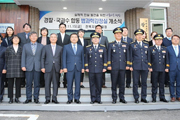
-
2019.7.3
Establishment of Jeju Office of NFS
With rising incidents and cases due to the rapid increase in population and tourists, the Jeju Office of the NFS was opened on July 19, 2020, to establish an on-site investigation system
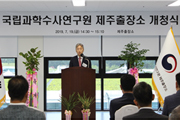
-
2017.11.2
Establishment of Gwangju Forensic Science Institute
Gwangju Forensic Science Institute of the NFS has assessed 35,000 cases annually since its establishment in Jangseong-gun, Jeonnam in 1997 was relocated to the Nano Industrial Complex in Jangseong-gun, Jeonnam.
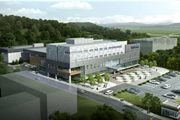
-
2010.7.26
Enforcement of the Act on the Use and Protection of DNA Identification Information
The 「Act on Use and Protection of DNA Identification Information」 is one of the measures for the eradication of violent crimes. It is a method to manage the DNA identification information of criminals who are at high risk of recidivism, thereby using it for rapid arrestment of the criminals. It was established in 2009 and enforced in 2010. Through this, the arrest rate of violent crimes such as sexual assault crimes has increased, and the DNA database has been contributing to scientific investigations, including the arrest of perpetrators of cold cases.
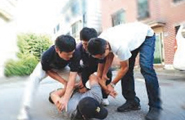
-
2010.8.13
Promotion to the NFS
According to Presidential Decree No. 2022314 on August 13, 2010, the National Institute of Scientific Investigation was promoted to the National Forensic Service, and on August 19, the position of the Research Director was promoted from high-official-level B to A as per the Decree of the Ministry of Public Administration and Security No.155. As a result of this promotion, the foundation to strengthen the research and development functions and to develop the professional scientific investigation agency has been prepared. In line with the promotion, the number of experts in the field of DNA and image analysis have been increased, and the DNA division has been expended to a center and reorganized.
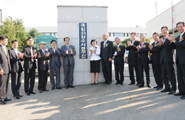
-
2011.5.25
Holding Asian Forensic Science Network (AFSN) meeting
The NFS held an AFSN plenary meeting, which is a meeting of Asian forensic scientists. More than 250 members of 18 analysis agencies in 11 Asian countries joined with the aim to take part in mutual development by sharing scientific investigation information.
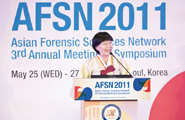
-
2013.7.18
Introduction of MDCT 3D image restoration technique for forensic medicine
With the introduction of a radiographic imaging system (MDCT), the NPS has clearly implemented the 3D image of the body using a 3D image restoration technique and constructed a systematic human body image data DB.
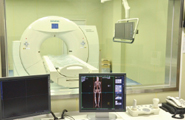
-
2013.11.18
Relocation of the main institute in Wonju and opening of Seoul NFS
The main NFS opened in Wonju is located in a 4-story building with one underground level. The institute mainly performs analysis of various incidents and accidents requiring precise examination and research and education. The main office in Seoul will be reorganized into Seoul NFS and will be responsible for incidents and accidents occurring in the metropolitan area, providing community-based services.
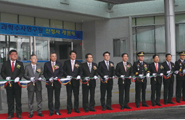
-
2014.1.16
Opening of Daegu NFS
The NFS had been approved for the plan for the establishment of Daegu NFS by the government in December 2009 in order to provide efficient, prompt and accurate analysis to Daegu and Gyeongbuk areas. The basic design was confirmed on November 11, 2011, and construction started on December 28, 2011. After 2 years of construction, the Daegu NFS building was completed on December 11, 2013, and commenced operations after the opening ceremony on January 16, 2013.
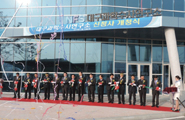
-
2014.7.25
Ryu Byeong-Eon Death-related Briefing
The NFS briefed the results of the examination for the cause of the death of Ryu Byeong-Eon, the former chairman of Semo group. Yoo Byeong-eun, was found dead in the Seoul Institute. The autopsy examining the left femur length, estimated height, the bone defect at the tip of the left second finger, and tooth and DNA analysis results confirmed that the dead body was Ryu, but despite analysis for poison, asphyxia, chronic disease, and outside force, the cause of death was impossible to determine due to the sever decay.
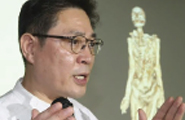
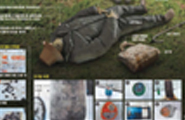
-
2014.10.12
Holding of World Scientific Investigation Research Fellowship (WFF)
This was an occasion to publicize the excellence of Korean scientific investigation and forensic science to the world through joint holding of representative forensic science international associations such as IAFS, ADSN and APMLA. This event attracted 1,500 experts from a total of 78 countries and shared the latest achievements in the field of forensic science. Through various events such as equipment exhibition, job coaching, concert, experience classroom, and youth scientist night, the great achievements of PR, participation, and exchange were reaped.
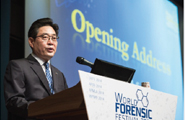
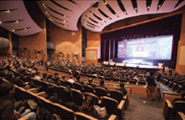
-
2015.5.27
Holding of International Forensic Expo (IFE)
To celebrate the 60th anniversary of its founding, the NFS held an International Forensic Expo near the NFS main office in Wonju from May 27 to 29, 2015 in order to spread Korean scientific investigations through the Korean forensic science system. About 50 police officers, senior police officers and policy department heads related to scientific investigations from 24 countries in the Middle East and Asia participated in the event. The expo provided an opportunity for participants to feel the excellence of Korean-style scientific investigations and expended substantial exchange and cooperation in the field.
